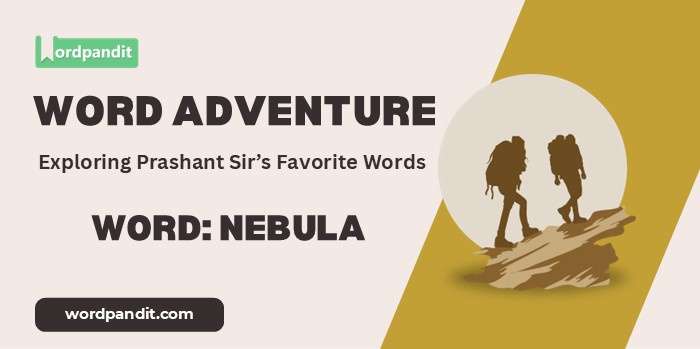Word Adventure: Nebula
The Headline
“Nebula: Where Stardust Dreams Are Born”
The Scoop
In the vast vocabulary of astronomical phenomena, some words capture not just scientific meaning but also the poetry of the cosmos. ‘Nebula’ is one such term – a word that bridges the gap between hard science and celestial beauty. Let’s explore how this fascinating word helps us understand the cosmic nurseries where stars are born and die.
Let’s Break It Down
The Plot Thickens
The story of ‘nebula’ begins in ancient times, when early astronomers noticed fuzzy patches in the night sky that didn’t behave like stars. The Latin word they chose perfectly described these mysterious cosmic clouds, though they couldn’t have known their true nature.
Interestingly, until the early 20th century, ‘nebula’ was used to describe any fuzzy celestial object, including what we now know are galaxies. It wasn’t until Edwin Hubble proved that some “nebulae” were actually distant galaxies that the term’s meaning narrowed to its current definition.
Today, nebulae are recognized as crucial players in the cosmic cycle of stellar life and death. Some are stellar nurseries where new stars form, while others are the remains of dying stars – a beautiful reminder of the universe’s endless cycle of creation and transformation.
Word in the Wild
The Twist
Here’s a fascinating detail: while we typically think of nebulae as distant phenomena, we’re actually surrounded by a nebula right now! The Local Bubble, a vast, low-density nebula spanning hundreds of light-years, encompasses our solar system. This reminds us that we’re not just observers of cosmic clouds – we’re living within one, making us quite literally children of the nebula.
Make It Stick
Nebula: Nature’s cosmic cotton candy, where stars go to be born and bid goodbye!
Your Turn
Have you ever observed a nebula through a telescope or seen stunning nebula photographs? What emotions or thoughts did these cosmic clouds stir in you? Share your celestial experiences in the comments below. Let’s explore how these distant cosmic wonders connect with our sense of wonder and place in the universe!
Down the Rabbit Hole
- Curious about different types of nebulae? Explore emission nebulae, reflection nebulae, and planetary nebulae.
- Interested in famous nebulae? Research the Eagle Nebula, the Crab Nebula, and the Helix Nebula.
- Want to understand stellar evolution? Dive into how nebulae participate in the life cycle of stars.
The Last Word
As we conclude our cosmic journey exploring ‘nebula’, I hope you’ve gained appreciation for these celestial clouds that paint our universe with color and mystery. From ancient astronomers puzzling over fuzzy patches of light to modern scientists unraveling the secrets of stellar evolution, nebulae continue to capture our imagination and expand our understanding of the cosmos. Until our next word adventure, this is Prashant from Wordpandit, encouraging you to look up and wonder at the cosmic clouds that shape our universe!












